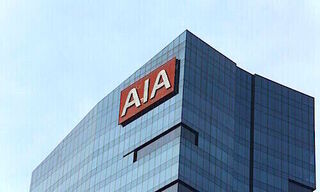Profits and assets under management took a major beating at UBS’ Asia Pacific wealth business in the first quarter of 2022, reflecting significant de-risking in the region.
UBS’ APAC wealth management business posted a pre-tax profit of $288 million, according to the bank’s first quarter results.
Traditionally a top contributor for the bank, the 38.5 percent year-on-year decrease marks the deepest pre-tax profit drop among all regions.
Operating income fell 20 percent to $709 million, driven mainly by lower transaction-based income. Loans fell 7 percent compared to the fourth quarter of 2021, reflecting client deleveraging from ongoing market uncertainty.
AUM Plunge
In addition to the bottom line, the bank’s assets under management in Asia also plunged in the first quarter.
From the $576 billion in the same period last year, UBS’ invested assets dove to $494 billion, a 14.2 percent fall or $82 billion – equivalent to a top-10 private bank in the region.
More Pressure in Asia
Risk appetite in Asia has been dented in the past year most notably due to pressures in the Chinese market with the CSI 300 Index falling more than one-third since its peak in February 2021. And according to the bank, there are more headwinds ahead for the region.
«Russia’s invasion of Ukraine has implications for the global economy and markets, increasing upward pressure on energy and commodity prices, as well as adding to concerns about disruptions to supply chains and the continuing effects of the pandemic and related restrictions, particularly in Asia Pacific,» it said in a statement.
«Investor sentiment turned more cautious in the first quarter of 2022, as these factors raised questions around the sustainability and shape of the recovery, deglobalization and inflation.»
Global Resilience
Despite the pressures in Asia, UBS still managed to post profit growth from its overall global business at $2.1 billion in net profit – its best first quarter result since 2007.
Its global wealth management unit posted a 7 percent dip in pre-tax profits to $1.3 billion while AUMs were 1 percent higher at $3.15 trillion.
























